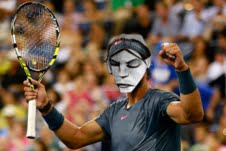Does Anonymity Pose An Obstacle to Fandom?

This year, the Townsend Blog will feature a series of posts from members of its Working Groups. The Society for Cultural Heritage, Arts, and the Law (SCHAL) Working Group studies the law as it relates to cultural heritage and the visual and performing arts. In this post, Bryan Cockrell, coordinator of the group, considers the idea of fandom.
Following a recent discussion of our Society for Cultural Heritage, Arts, and the Law working group, which considered the contemporary relationships among musicians, labels, and fans, I gave some thought to my own experience of fandom. For musicians, one route to the establishment of a wide fanbase can be through heightened accessibility: the dissemination of your music through streaming services, incessant touring in support of your records, and—not to be underestimated—the appearance of your self in different media (the text of interviews and also photographs and video clips). But for many of the non-Mileys and non-Biebers of the world, there is a gradient of accessibility: not everything is shared. Does such distance from the public inhibit the development of a fanbase?
Indeed, some musicians seek to shroud themselves almost entirely, as is the case of one of my favorites (someone of whom I am a big ‘fan’): Burial, a London-based electronic producer whose music is simply haunting, much like his persona, or lack thereof. Since releasing two albums, in 2006 and 2007, Burial has released a string of EPs that tend to appear with little advance fanfare. Aside from these official releases, a substantial amount of unreleased material has been issued through various UK radio shows, often with a seal of authenticity offered by Kode9, a confidant of Burial and the Hyperdub label director. Burial has conducted only a few interviews (on a blog curated by DJ/producer Blackdown and in The Wire) and only two images showing his face are known.
Listening to a Burial track on a compilation I recently purchased made me nostalgic for the time when this track and others like it were new, a measly six years ago! Yet Burial’s music is itself nostalgic. It echoes UK club music from the late 1990s and early 2000s—garage, 2-step—recreating the wisps of tunes that escape through the clubs’ open doors as the crowd wanes and the dawn approaches. Is Burial a legend? Is he “over” (that is, retired)?
I considered the case of athletes who retire around age 30, having earned an overwhelming number of trophies in such a short time. Unlike a musician, it would be far more difficult for athletes, for whom the corporeal is everything or nothing, to be physically anonymous. As an obsessive fan of tennis, I thought of Roger Federer and Rafa Nadal. TV commentators have spoken, perhaps accurately, of the end of the “Federer-Nadal era.“ I have re-watched the epic 2008 Wimbledon final between the two players through the 29 separate Youtube videos uploaded by a user named MrYoonyoon. I felt an eerie sensation watching the BBC pre-match coverage, where, of course, no one recognizes just how monumental this contest is going to be. And, as with Burial’s music, I am nostalgic for a time that is relatively recent. But, in the case of Federer and Nadal, their presence—the ability to see them through videos—assuages these pangs of sadness at the supposed “end of an era.“
The same cannot be said for Burial. Will he actually "retire" without ever performing live? Will we never see him beyond those two photographs? I recently purchased a print copy of his interview in The Wire specifically as a form of memorabilia, material to supplement his musical artifacts. Yet the mystery of Burial’s identity is entirely apposite to the music he makes. We fans, in this case, would not want it another way.
Image Credits:
Rafael Nadal from Sports Illustrated
Burial from the blog Rouge's Foam
Composite image created by Bryan Cockrell